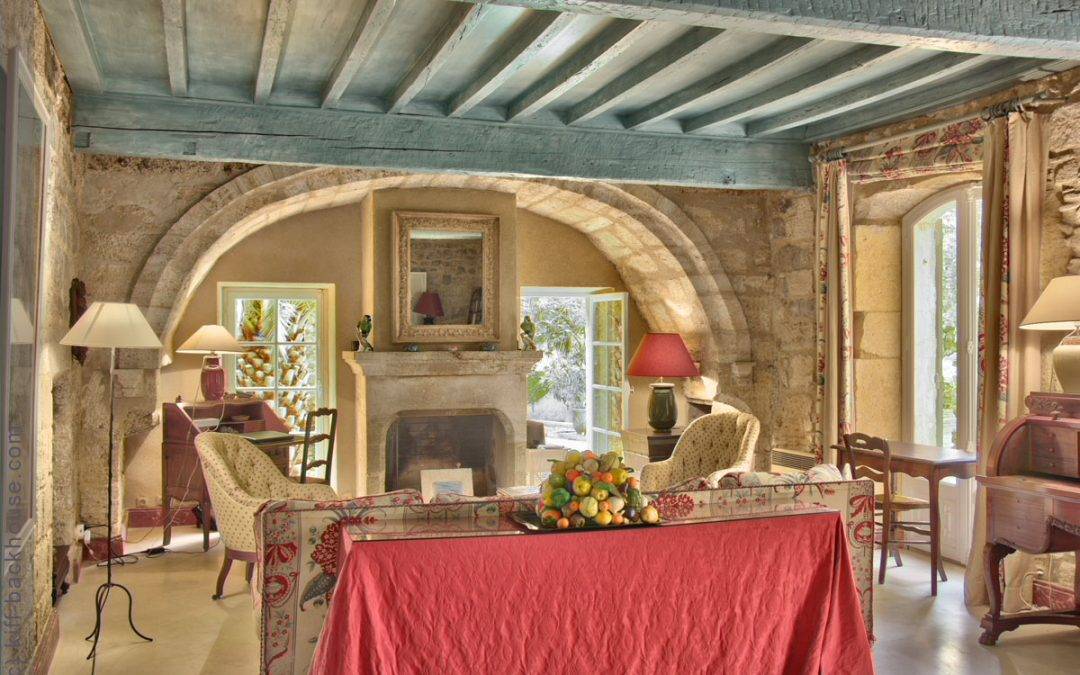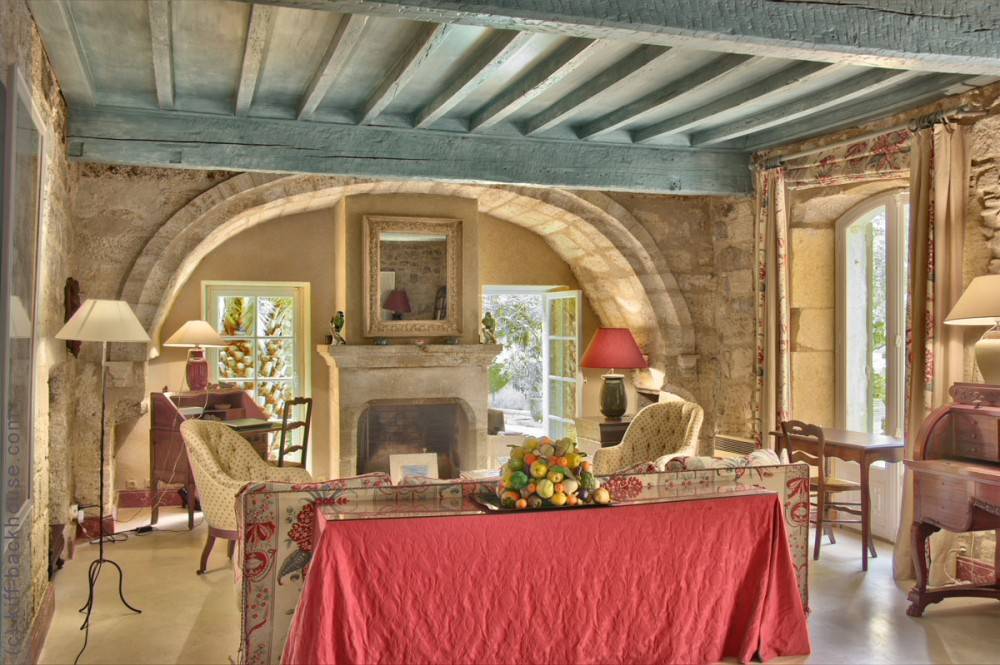I know, I know …
It’s been absolutely ages since I posted, tweeted, bumped, commented and uploaded … well, I’ve been busy! Travelling to the UK (and a no internet home!) and then catching up.
Dark Rooms
No, no, not that type. Old castles and Chateaux! Last week, i went and did a photo shoot for a really, really old house, possibly, some of the house dated back to the 14th and 15th Century and may have been an Apocathery for the Church and Abbey just across the street. So the point of this history lesson? Old houses are more often than not quite dark and dingey!
Living Room
The main living room, as you can see in the above photo, has beautiful stone features but VERY small windows! So either you would need 1000’s of Watts or half a dozen bowen flashes. Both of these are a) out of my budget and b) I don’t fancy carrying them around with me all day!
Flashes
So rather than multiple flash heads, I decided to use mutliple frame flashes (with the flash in different places, behind the settee, under the coffee table, in the corner under the arch etc….) and a 3 frame HDR sequence. As it turned out the HDR sequence wasn’t absolutely necessary and this week-end I might try processing this without. But I like the HDR effect for an old property like this – it’s different with a modern apparrtment.
So using Relight from Oloneo which is part of their Photo-Engine product (I really like Oloneo Photo-Engine for HDR!!!) I combined the 6 frames to produce 1 tiff. I then overlayed this in Photoshop, over the HDR image.
Light on … Light Off
Oloneo Relight enables you to turn up and down the power of each frame and thus of each light. Added to that, you can also change the white balance of the lights to get a cleaner, less orange glow, without having to merge layers in Photoshop.
Conclusions
For me, with old dark houses to photograph, this technique is going to make a huge difference. I know that the technique has been around for a while masking in and out different areas, but this way is going to be so quick.
Set the camera up on manual, place the flash, fire a frame … repeat n times!
JOB DONE! … What do you think?



Beautiful shot. Great to know how your worked this scene. Love the details in the ceiling and the arch. So cool
Looks great – you definitely wouldn’t think that this was “an old dark house’ that you’d be working in.
Gorgeous picture ! Lighting & composition, perfect.